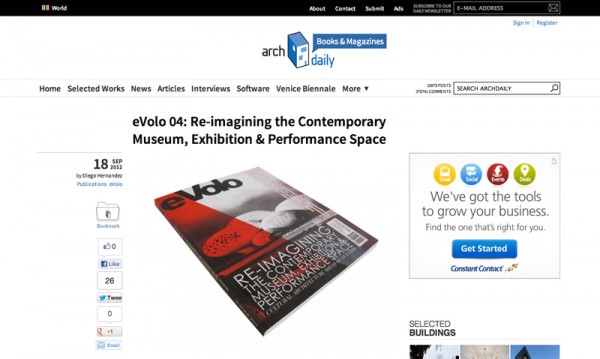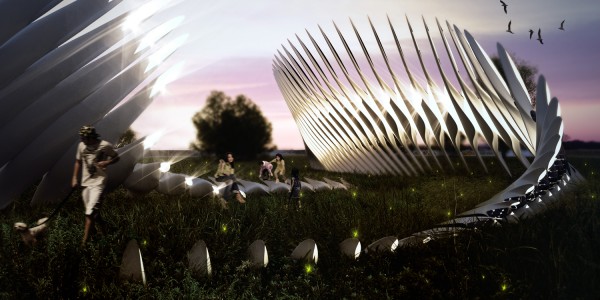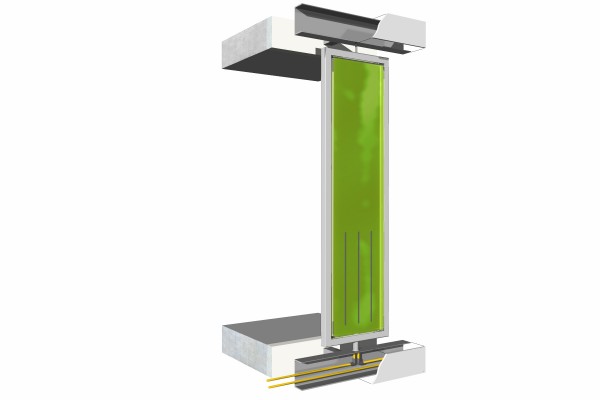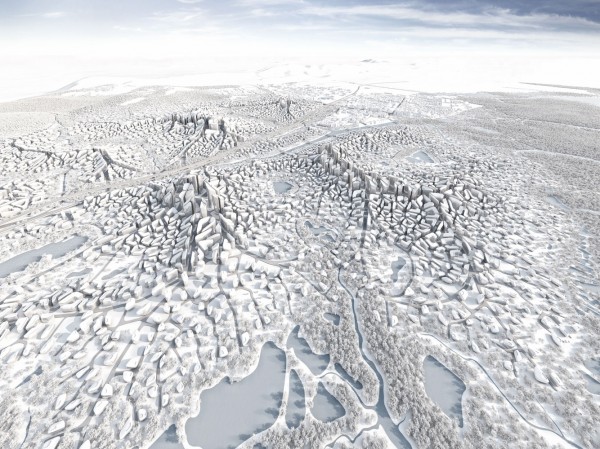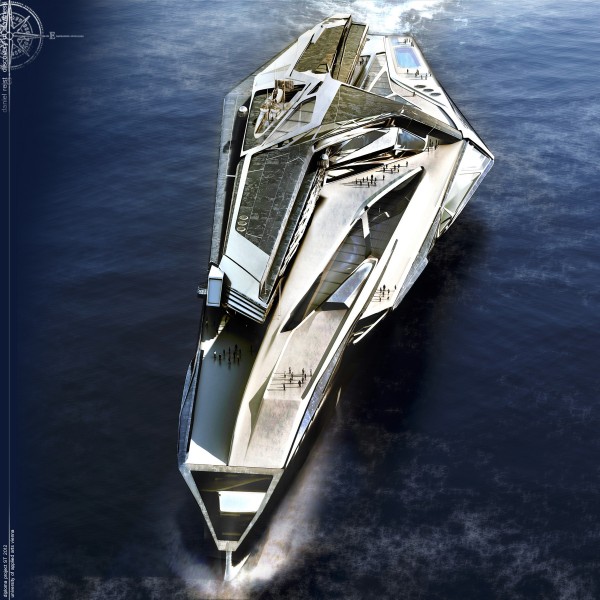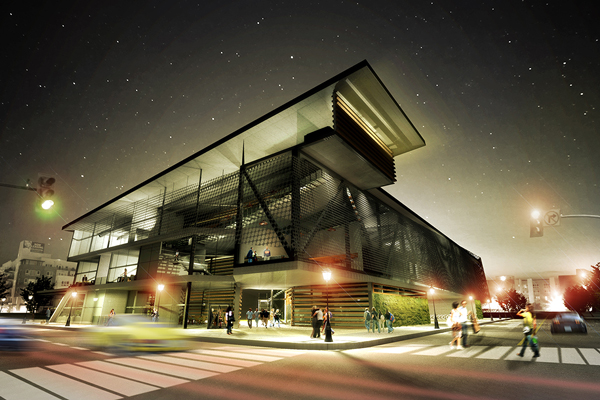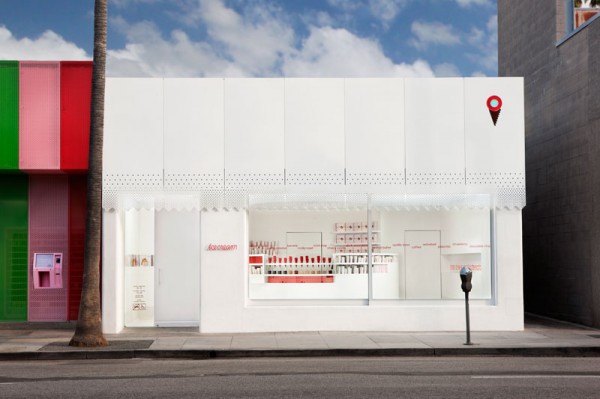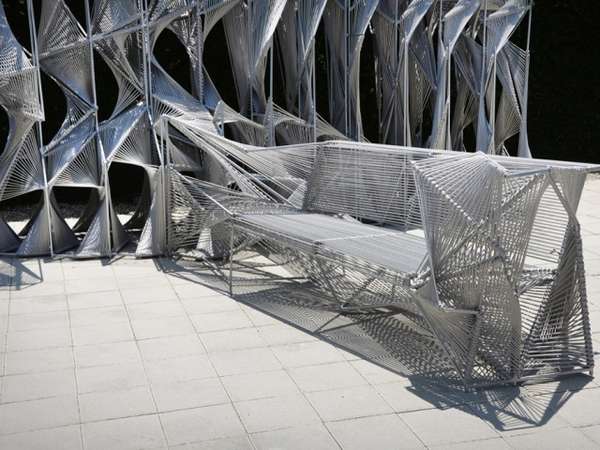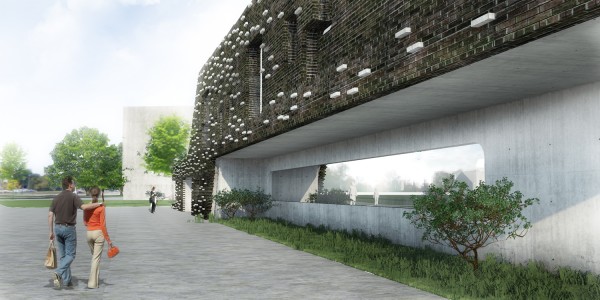We are pleased to read Archdaily’s review about eVolo 04: Re-Imaginning the Contemporary Museum, Exhibition, and Performance Space. This issue explores the most innovative examples of performance and exhibition architecture today. These are projects that revolutionize architecture on many levels, including sustainability, aesthetics, technology, and urban design. It is interesting to point out that these works are not concentrated in one specific region, but are located in every corner of the globe; from MVRDV’s Comic and Animation Museum in China, to the new Broad Museum in Los Angeles by Diller Scofidio + Renfro, or Kengo Kuma’s Victoria and Albert Museum in Dundee, Scotland. Read the rest of this entry »
Archdaily Reviews eVolo 04
Adaptive Mutations Architecture
Adaptive Mutations is a design predicated on the fact that nature exists not in stasis, but in perpetual flux. Just as life forms in nature evolve to their surroundings, so must our design considerations. “Adaptive Mutations” are the DNA rather than the collective composition, understanding the relationship among discreet modules, rather than the global agenda. Thus, the design situates itself not in physical locations on the site, but at the intersection of a design discussion, open to collaborative adaptation. Read the rest of this entry »
Micro-algae Prove Ideal for Making Green Facades
A zero-energy house under construction in Germany is set to provide the first real-life test for a new façade system that uses live microalgae to provide shade and generate renewable energy at the same time.
The world’s first ‘bio-adaptive façade’ will be installed in the ‘BIQ’ house for the International Building Exhibition (IBA) in Hamburg, which runs through 2013.
The façade concept is designed so that algae in the bio-reactor façades grow faster in bright sunlight to provide more internal shading. The ‘bio-reactors’ not only produce biomass that can subsequently be harvested, but they also capture solar thermal heat – both energy sources can be used to power the building.
In practice, this means that photosynthesis is driving a dynamic response to the amount of solar shading required, while the micro-algae growing in the glass louvres provide a clean source of renewable energy. Read the rest of this entry »
Adaptive Urban Fabric
Our modern times are unimaginable without planning. The growth of settlements and cities is so tempestuous that a slow process of adaptation is no longer possible. This, therefore, poses the question, whether by means of more adaptable planning theories, processes can be promoted or simulated.
This work examines the thesis of Frei Otto regarding the future direction of urban planning theory through the lens of parametric urbanism. The urban theory proposed translates the type of generating principles of the natural systems and unplanned settlements invoked by Otto, into a means of developing new forms of emergent urbanism.
Within these naturally evolving systems, whether biological, chemical, or physical, a base structural principle becomes the foundation for intelligent pattern generation, as seen in the supply systems of leaves, bubbles, foams, or crack patterns. The result may not be read as typical or predictable, but offers an optimized solution capable of adaptation and growth. Rather than simply mimic the form of such systems, this approach to urban planning uses foundational principles as a means of developing new, informed patterns of connection and territory. Read the rest of this entry »
Geometric Algorithm and Fibonacci Sequence Used for Airspace Installation
Airspace is a full-scale prototype that produces double curved, mathematically-based shape design methods, digitally designed advanced geometry, using completely standard, scalable fabrication technology.
The concept of Airspace is an experiment which is inspired by existing ceiling frameworks transform to three-dimensional space. Built from four hundred uniquely cut, two-ply museum boards, the installation favors intense detail over seamless elegance. This project develops Fibonacci sequence that adapts to diverse performance requirements through modulating the system’s inherent geometric and material parameters, while remaining within the limits of available production technologies. The idea was to move away from the idea of “the corridor as a service/ access space” and towards the idea of a “field of aesthetic” that extends the architectural potential of Airspace form by incorporating such an architectural system as structure, aperture, fenestration, and construction directly into the project’s geometry. By existing ceiling frameworks, the research evolved into the concept of the confluence of patterns, where the primary force of the site is the connections that constantly intersect and separate to create both access and void spaces. Read the rest of this entry »
21st Century Vessel, Not Your Ordinary Cruise Ship
What is the definition of a building? Somthing that is built for human habitation. It can also be described as a structure that has floors and walls. But why should a building always stay at one place. Ships are one of the largest entities that human mankind has ever constructed. If we take the the aircraft carrier as an example. It is not just a ship, it is also a hybrid of programs, a connection between air and water. Hans Hollein was referring to the spatial performance of this vessel in his project “der Flugzuegtraeger in der Landschaft”. Besides the Aircraft carrier as ship typlogy I want to mention one special vessel. The SS Normandie for me is really interesting. The designers decided to create a huge open space in the center of the ship to provide space for events, concerts and performances. So they decided to make the planning and the construction of this ship more complicated to achieve more spatial quality. Read the rest of this entry »
San Diego Culinary Arts School
Steel train truss bridges have been a staple in American culture since the early 19th century. Truss bridges have helped shape the steel industry with new truss construction and engineering able to hold 120-240 ton trains. As technology progresses and steel has become almost a 100% recyclable old train truss bridges are being retrofitted and torn down due to increased shipping loads; creating a wide range of adaptive reuse possibilities.
The Culinary Arts School of San Diego designed by Kyle Duvernay, Ian Patzke, Siah Afrasiabi – students with the NewSchool of Architecture and Design – aims to take advantage of existing resources and couple them with new design projects and programs. The school’s mission is to show how the culinary industry is all about efficiency and circulation. The continuous ribbon that transforms from double skin into the walls, floors and façade represents these culinary ideas. This school will become an icon which emanates green design by utilizing existing trusses for the long span structure, growing rooftop herbs, and using a double skin to control lighting conditions. The culinary school’s positive ideology will go hand in hand with San Diego’s East Village identity, which aims to connect the community through education and involvement. Read the rest of this entry »
Re-imagining the Ice Cream Shop / Sprinkles Ice Cream
Lead designer and architect, Andrea Lenardin from a l m project, created the beautiful décor at Sprinkles Ice Cream, opened in May of 2012. For Sprinkles Ice Cream, the new venture of Sprinkles, it was just as important to be identifiable as a new member of the Sprinkles family, as to create a brand that simply celebrates ice cream, its heritage, and its iconography.
Exterior like interior derive from a minimalistic design approach and are brought to life by the ample flow of natural light and shadow play. The sparse white façade consists of metal shields with a laser-cut perforation along Sprinkles signature scalloped line applied to the bottom edge. The illuminated cone logo at the top right and a pin-mounted red script “icecream” next to entrance along with the crowd populating the indoor/outdoor bench stretching across almost the entire width of the façade entice you to enter. Read the rest of this entry »
Screenplay Bench: Questioning Boundaries of Visual Perception
This installation and seating place in one was made of 13700m of woven rope, strung through steel frames. Creating optical illusion, this colossal piece is questioning boundaries of human perception. Screenplay was created for this year’s Dwell on Design festival in Los Angeles, by Oyler Wu Collaborative.
Almost static in orthographic projection, the wall unit is clearly recognized as organized series of patterns. But as the fourth dimension is activated by the viewer’s moving around the piece, the situation dramatically changes and the unit reveals its complex nature, oscillating between series of twisted surfaces and intriguing play of cavities and material densities. Read the rest of this entry »
Rethinking Brick at a new Mediatheque in Toulouse / Complex City
This project by Olivier Brouillard from COMPLEX CITY is a media library, a space which preserves and gives access to audio-visual contents, sound documents and video recordings, material considered as cultural testimony with the same value than written documents.
Divided between paper and virtual information, it characterizes a reality of a modern way to use space, these places will evolve in a parallel manner to media progress but especially to technology progress, having as main support the computer supplied with Internet.
Designed in the area of Toulouse, this media library has the purpose of exalting the brick, an architectural material considered as a cultural patrimony of this region. Read the rest of this entry »

